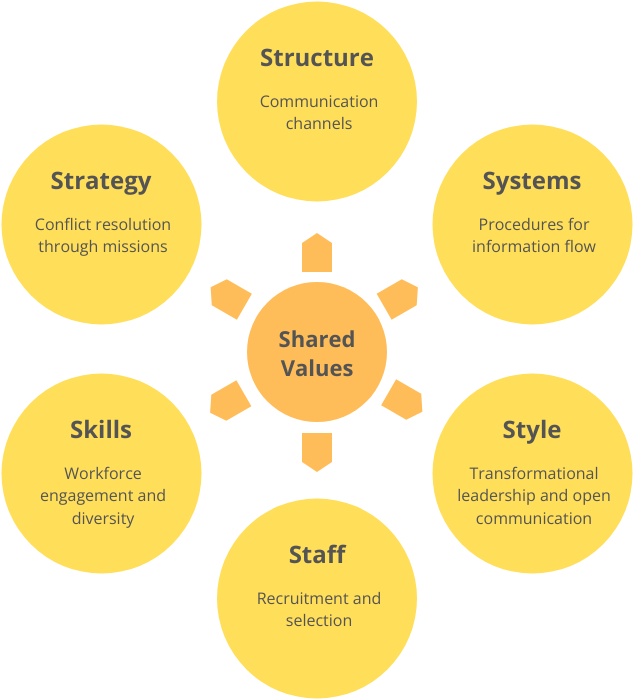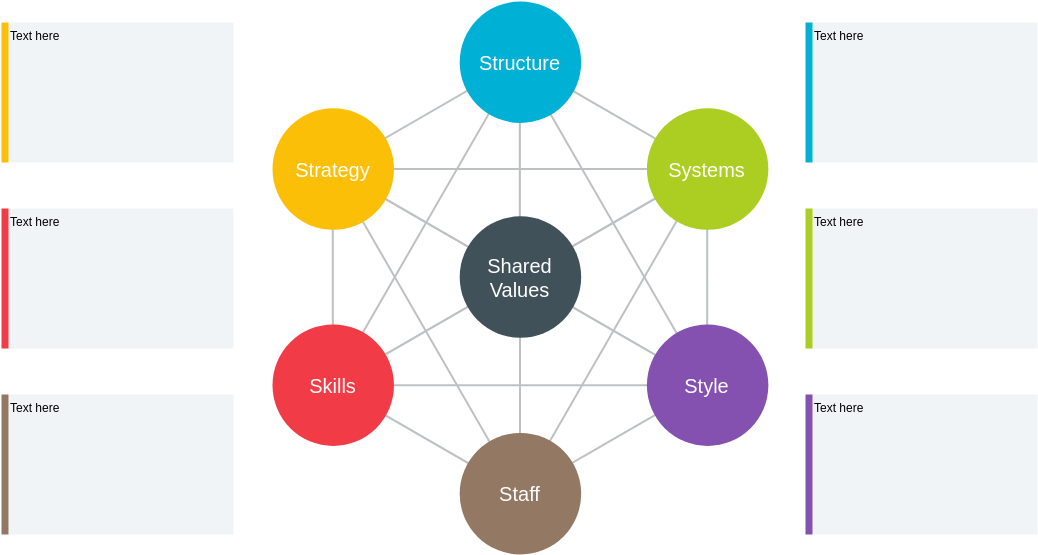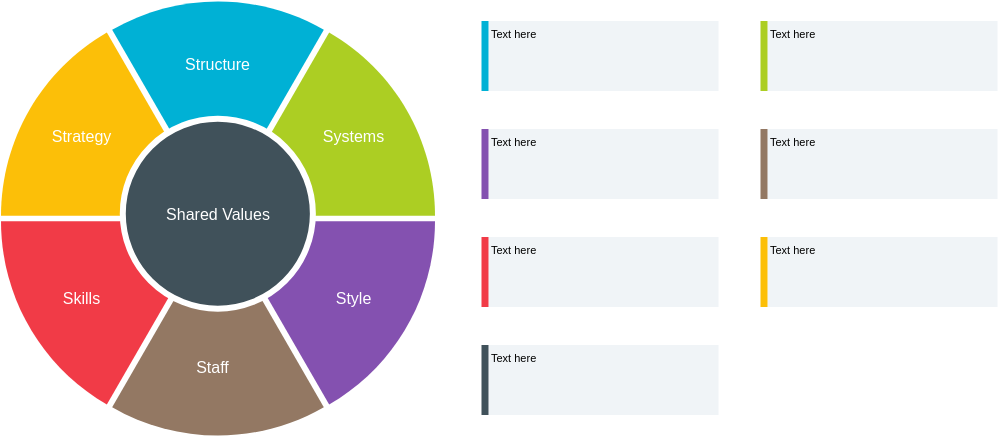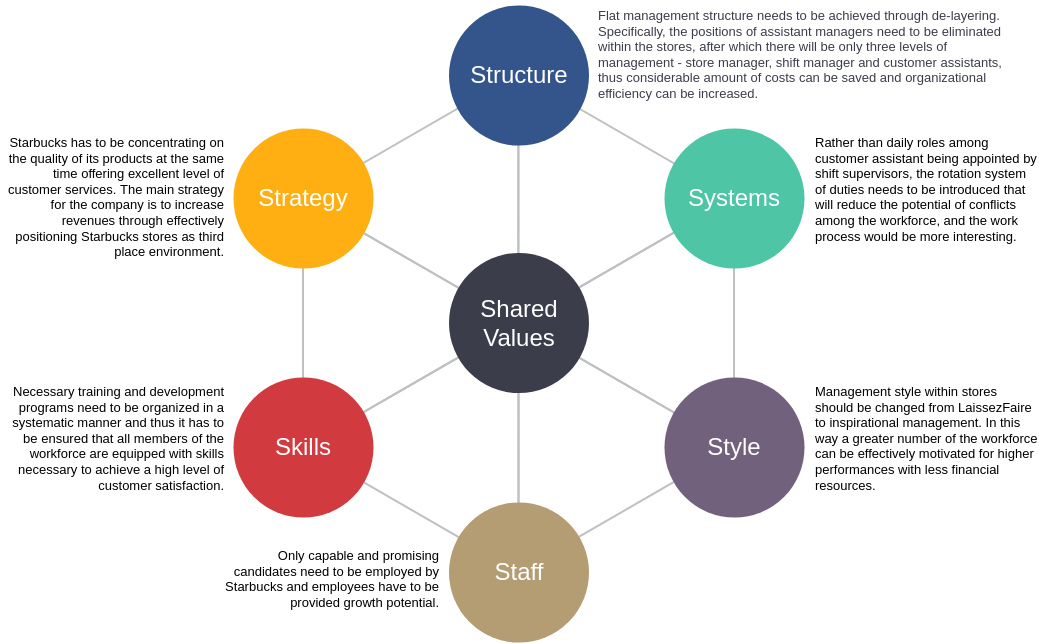McKinsey 7S Model Comprehensive Guide
The 7S model first appeared in the 1981 best-selling book, The Art of Japanese Management: Applications for American Business, written by Stanford professor Richard Pascale and Harvard professor Anthony Athos. The motivation for writing this book was to investigate what makes Japanese companies so successful.
At almost the same time, Thomas J. Peters and Robert H. Waterman, Jr. two Stanford University management gurus and long-time employees of the famous McKinsey & Company, interviewed 62 of the oldest and best large companies in the United States and selected 43 based on profitability and growth rates. in 1978, these four authors together proposed the 7S model.
The model later appeared in Peters and Waterman’s best-selling book, The Pursuit of Excellence: Lessons from America’s Best-Run Companies, and became the fundamental management consulting tool of McKinsey & Company, the world’s leading management consulting firm. Since then, the 7S model has gained widespread fame and popularity.

What is the McKinsey 7S Model?
The McKinsey 7S Model ( also known as 7S Model for short) is the seven elements of a business organization designed by the McKinsey & Company Research Center, which states that companies must consider all aspects of the development process in a comprehensive manner, including structure, systems, style, staff, skills, strategy, and shared values – the seven skills, strategies, and shared values.
In this model, strategy, structure and systems are considered the “hardware” for business success, while style, people, skills and shared values are considered the “software” for successful business operations. McKinsey’s 7S model reminds managers around the world that software and hardware are equally important.
Strategy
Strategy is the overall planning of the enterprise’s development goals, ways and means to achieve them, based on the internal and external environment and available resources, in order to survive and develop stably in the long term, and it is the centralized embodiment of the enterprise’s management ideology, the result of a series of strategic decisions, and the basis for the formulation of enterprise plans and programs.
Structure
Strategy requires a sound organizational structure to ensure implementation. Organizational structure is the basis on which the organizational meaning and mechanism of the enterprise survive. It is the composition form of the enterprise organization, i.e., the effective arrangement and combination of organizational elements such as objectives, synergy, personnel, positions, interrelationships and information. It is the decomposition of the enterprise’s goals and tasks into positions, and then the integration of positions into departments, and the formation of an organic whole of a vertical system of rights and horizontal system of division of labor and collaboration by numerous departments. Organizational structure is for strategy implementation, different strategies need different organizational structure to correspond with it, and organizational structure must be coordinated with strategy.
System
The development and strategy implementation of the enterprise need a perfect system as a guarantee, and in fact the system is the specific embodiment of the enterprise spirit and strategic thinking. Therefore, in the process of strategy implementation, a system consistent with strategic thinking should be developed to prevent mismatches and inconsistencies in the system, and to avoid the emergence of systems that deviate from the strategy. Such as the innovative spirit of 3M’s innovation system, in 3M, a person who participates in the development of new product innovation business, his position and salary in the company will naturally change with the achievements of the product, even if he started as a production line engineer, if the product hits the market, he can be promoted to product engineer, and if the annual sales of the product reaches five million dollars, he can become Product Line Manager. This system greatly motivates employees to innovate and promotes the development of the company.
Style
Outstanding companies exhibit a loose and strict management style that is both centralized and decentralized, giving extreme autonomy to the production and product development departments, while stubbornly adhering to a few long-standing values. In a strong systematic organization, employees are considered according to the overall statistical concept of the company and not as individual personalities.
Staff
One of the key principles of IBM is to respect individuals and spend a lot of time implementing this principle. This is because they believe that employees, regardless of their position, are the source of effectiveness. Therefore, while making good organizational design, enterprises should pay attention to equipping the workforce that meets the needs of strategic thinking, training them well, assigning them appropriate jobs, and strengthening publicity and education so that personnel at all levels of the enterprise can establish an ideology and work style that is compatible with the strategy of the enterprise.
Skills
In implementing the company’s strategy, employees need to acquire certain skills, which depend on rigorous and systematic training. Konosuke Matsushita believes that everyone must undergo rigorous training in order to become an excellent person, such as the athletes who gallop on the sports field to show their skills, but their amazing physique and skills do not come out of thin air, but are the result of long-term physical and mental rigorous training. Without training, a person may have no way to perform even if he or she has very good natural qualifications.
Therefore, in the process of business development, the overall situation of the company should be considered comprehensively, and the company can only be successful if the 7 elements, both hard and soft, can communicate and coordinate well.
Shared values
Corporate values are the fundamental meaning of a company’s existence and should be the fundamental motive and driving force for the operation of its own economic system. Values have the role of guidance, restraint, cohesion, motivation and radiation. Scientific incentives can stimulate the enthusiasm of all employees, unify the will and desire of enterprise members, and work together to achieve the strategic goals of the enterprise. This requires a study of the common values of the enterprise, whether the values are understood and shared by all members of the enterprise and used as principles of action. Whether there is a consensus between the whole enterprise and whether there is a deviation between the concept and behavior.
Infographic Design Tool for 7S Model
The McKinsey 7S model is a framework for organizational effectiveness that assumes that the seven internal elements of an organization must be aligned and strengthened in order to be successful. These seven elements all begin with the letter S, hence the model’s name, the McKinsey 7S Framework. Visual Paradigm features an intuitive chart editor and a rich set of McKinsey 7S templates to support your presentation needs.
7S Model Templates and Examples

Edit this McKinsey 7S template

Edit this McKinsey 7S Model template


Edit this McKinsey 7S template (Starbucks Example)

